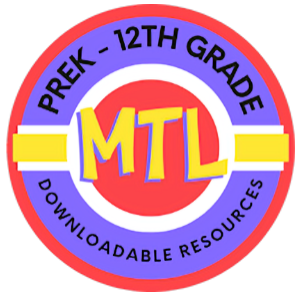Category: Branch of Science
- Home
- /
- Shop
- /
- By Subject
- /
- Science
- /
- Branch of Science
Showing 1–20 of 306 results
-
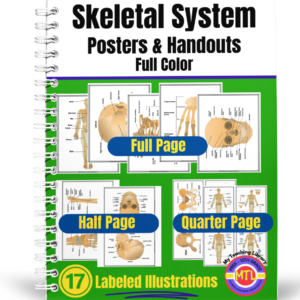 $5.00Buy Now
$5.00Buy Now17 colorful, labeled illustrations of the complete skeletal system to use in a Science (Biology / Anatomy) classroom as posters and handouts! Illustrations are full page, 2 per page (half page) and 4 per page (quarter page). Suggested to use with: Skeletal System | Coloring Workbook (or) Biology – Anatomy Coloring Workbooks Bundle
-
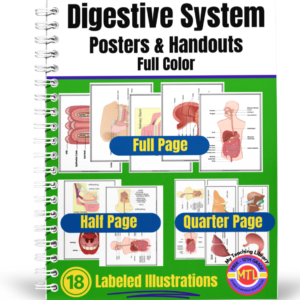 $5.00Buy Now
$5.00Buy Now18 colorful, labeled illustrations of the complete digestive system to use in a Science (Biology / Anatomy) classroom as posters and handouts! Illustrations are full page, 2 per page (half page) and 4 per page (quarter page). Suggested to use with: Digestive System | Coloring Workbook (or) Biology – Anatomy Coloring Workbooks Bundle
-
Sale!
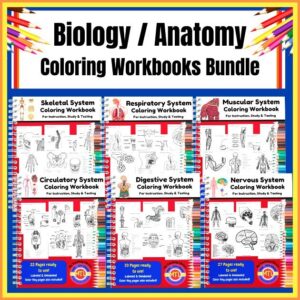 Buy Now
Buy Now$30.00Original price was: $30.00.$25.00Current price is: $25.00.Bundle of all six of My Teaching Library’s Biology / Anatomy Coloring Workbooks. Each workbook is complete and detailed, perfect for instruction, study and even testing high school level Biology and Anatomy students.
Included illustrations (diagrams) all have three types of pages:
a: labeled (great for instruction, use as a handout, poster or answer key)
b. unlabeled with blank color key (student coloring worksheet)
c. unlabeled (student page for study or an assignment, quiz or test having students label each part)Detailed teacher notes are included which give suggestions on the use of each.
-
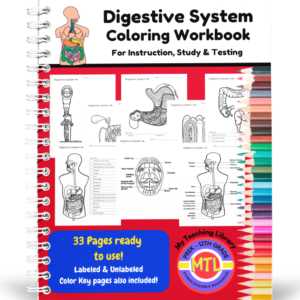 $5.00Buy Now
$5.00Buy NowComplete and detailed, this Digestive System Coloring Workbook is perfect for instruction, study and even testing high school level Biology and Anatomy students. There are 11 different illustrations (diagrams) and each have three types of pages:
a: labeled
b. unlabeled with blank color key
c. unlabeled
Detailed teacher notes are included which give suggestions on the use of each.
(Suggested color posters and handouts to use with this resource: Digestive System | Posters and Handouts) -
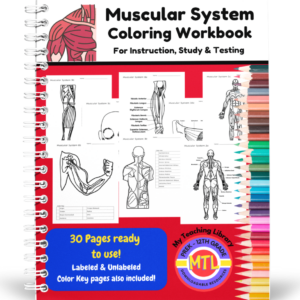 $5.00Buy Now
$5.00Buy NowComplete and detailed, this Muscular System Coloring Workbook is perfect for instruction, study and even testing high school level Biology and Anatomy students. There are 10 different illustrations (diagrams) and each have three types of pages:
a: labeled
b. unlabeled with blank color key
c. unlabeled
Detailed teacher notes are included which give suggestions on the use of each. -
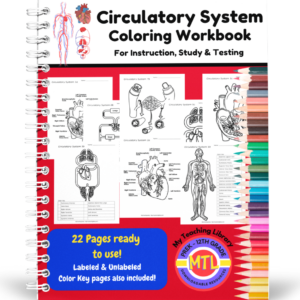 $5.00Buy Now
$5.00Buy NowComplete and detailed, this Circulatory System Coloring Workbook is perfect for instruction, study and even testing high school level Biology and Anatomy students. There are 7 different illustrations (diagrams) and each have three types of pages:
a: labeled
b. unlabeled with blank color key
c. unlabeled
Detailed teacher notes are included which give suggestions on the use of each. -
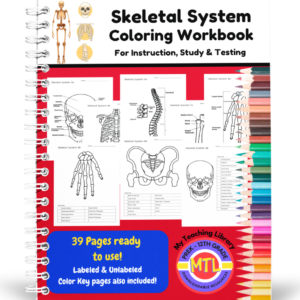 $6.00Buy Now
$6.00Buy NowComplete and detailed, this Skeletal System Coloring Workbook is perfect for instruction, study and even testing high school level Biology and Anatomy students. There are 13 different illustrations (diagrams) and each have three types of pages:
a: labeled
b. unlabeled with blank color key
c. unlabeled
Detailed teacher notes are included which give suggestions on the use of each. -
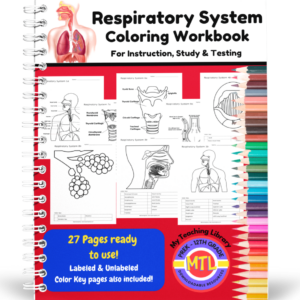 $4.00Buy Now
$4.00Buy NowComplete and detailed, this Respiratory Coloring Workbook is perfect for instruction, study and even testing high school level Biology and Anatomy students. There are 9 different illustrations (diagrams) and each have three types of pages:
a: labeled
b. unlabeled with blank color key
c. unlabeled
Detailed teacher notes are included which give suggestions on the use of each.Respiratory Coloring Workbook Preview Video
GET THE ENTIRE BIOLOGY / ANATOMY COLORING WORKBOOK BUNDLE!
-
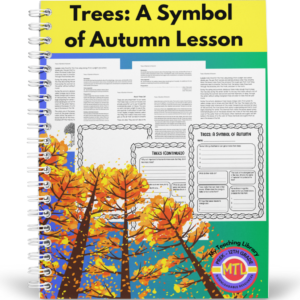 $2.50Buy Now
$2.50Buy NowA multi-age lesson to teach students (1st – 5th grades) about trees! The lesson is designed as a Fall (Autumn) outdoor/indoor activity lesson as the leaves are changing colors but can be easily converted to an indoor activity only. If using as an indoor only activity, be sure to have photos of trees to incorporate into the lesson.
Students will learn about:-
What trees provide
-
Aspects of a ‘living’ tree (how they get water, nutrients and breathe)
-
Parts (and their function) of a tree: roots, trunk, bark, branches, leaves
-
How leaves make food
-
Types of trees: deciduous and evergreen
Includes:
– Teacher lesson notes (guide)
– Student informational text
– Student activity worksheet pages
– Answer keys -
-
Sale!
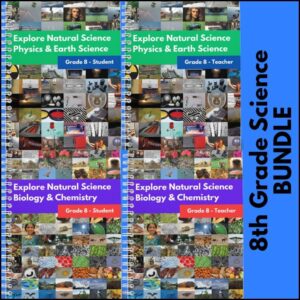 Buy Now
Buy Now$60.00Original price was: $60.00.$50.00Current price is: $50.00.This complete bundle is a full year of 8th grade science! Comes complete with two student textbooks and two teacher editions:
Natural Science: Biology & Chemistry – Grade 8 (Student Edition)
Natural Science: Biology & Chemistry – Grade 8 (Teacher’s Edition)
Natural Science: Physics & Earth Science – Grade 8 (Student Edition)
Natural Science: Physics & Earth Science – Grade 8 (Teacher’s Edition)Preview video of one of the student textbooks: Biology & Chemistry
See the table of contents for each student edition below:
-
Sale!
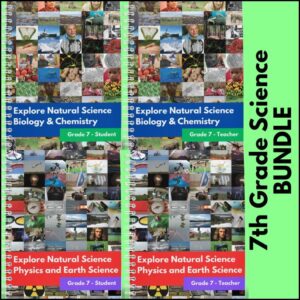 Buy Now
Buy Now$60.00Original price was: $60.00.$50.00Current price is: $50.00.This complete bundle is a full year of 7th grade science! Comes complete with two student textbooks and two teacher editions:
Natural Science: Physics & Earth Science – Grade 7 (Student Edition)
Natural Science: Physics & Earth Science – Grade 7 (Teacher’s Edition)
Natural Science: Biology & Chemistry – Grade 7 (Student Edition)
Natural Science: Biology & Chemistry – Grade 7 (Teacher’s Edition)Watch a short video preview of the Physics & Earth Science student edition here.
See the table of contents for each student edition below:
-
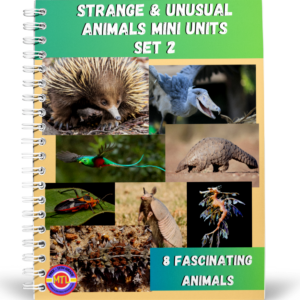 $8.00Buy Now
$8.00Buy NowStudents will love learning about 8 different ‘strange and unusual’ animals in this set of eight mini units! In each mini unit, students will learn all about one very uncommon animal, what they look like, where they live (habitat and location), what they eat, interesting facts, interactions with humans, if they are kept as pets / have been domesticated and more!
Animals in this set:
– Assassin Bug
– Moloch
– Quetzal
– Sea Dragon
– Shoebill Stork
– Armadillo
– Pangolin
– EchidnaPages include colorful photos and will keep students interested as they learn about each animal. After reading, students will have 2 notebooking pages to complete about each animal.
Also included: Taking it Further – Additional suggestions for building additional knowledge and fun extended activities!
Also, check out…Strange and Unusual Animals | Set 1
-
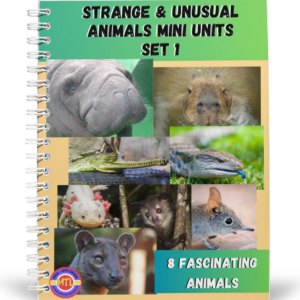 $8.00Buy Now
$8.00Buy NowStudents will love learning about 8 different ‘strange and unusual’ animals in this set of eight mini units! In each mini unit, students will learn all about one very uncommon animal, what they look like, where they live (habitat and location), what they eat, interesting facts, interactions with humans, if they are kept as pets / have been domesticated and more!
Animals in this set:
– Gharial
– Dugong
– Capybara
– Blue-Tongued Skink
– Axolotl
– Aye Aye
– Elephant Shrew
– FossaPages include colorful photos and will keep students interested as they learn about each animal. After reading, students will have 2 notebooking pages to complete about each animal.
Also included: Taking it Further – Additional suggestions for building additional knowledge and fun extended activities!
Check out: Strange and Unusual Animals | Set 2
-
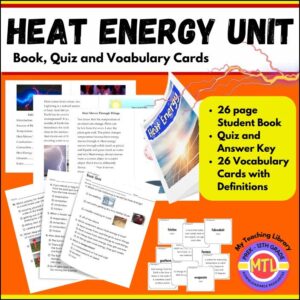 $3.25Buy Now
$3.25Buy NowThis unit introduces several important concepts about heat energy including heat sources, temperature measurement, controlling heat through insulation and the importance of heat energy for living things. This unit will also explain how heat is transferred including convection, conduction and radiation.
The resource includes:
- – Student book
- – Quiz with answer key
- – Vocabulary cards with definitions
-
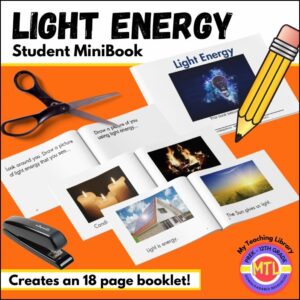 $1.75Buy Now
$1.75Buy NowStudents will create an 18 page mini-book as they learn about different sources of light energy!
-
 $2.50Buy Now
$2.50Buy NowStudying dinosaurs? Here are 12 picture and fact cards plus a worksheet for students to use as the report on each dinosaur!
Dinosaurs included: Spinosaurus, Ankylosaurus, Stegosaurus, Pteranodon, Velociraptor, Triceratops, Corythosaurus, Iguanodon, Diplodocus, Dimetrodon (not a true dinosaur but often covered in textbooks), Apatosaurus, Tyrannosaurus. -
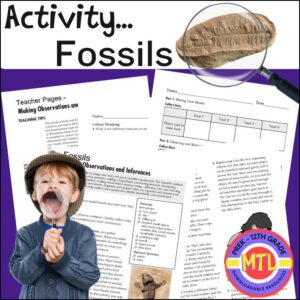 $1.25Buy Now
$1.25Buy NowStudying fossils? With this fun activity, students will create a variety of ‘fossils’ while learning how to make observations, inferences and how to distinguish between the two!
Includes- Student and teacher pages:
– Student “how to” activity pages
– Student data worksheet
– Student critical thinking worksheet
– Teacher pages and answer keys -
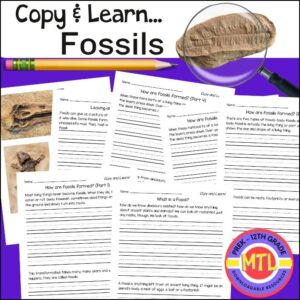 $1.75Buy Now
$1.75Buy NowThis elementary resource is designed to teach students about fossils. In this ‘Copy and Learn’ product, students will learn what fossils are made of, two types of fossils (body and trace) and how they form.
Included: 6 Copy and Learn pages and 1 fossils photo page. -
 $2.00Buy Now
$2.00Buy NowIn this resource, students will learn about living things, (plants and animals) and what they need to survive within their habitats. Students will investigate the dependence of plants on air, water, nutrients, and light. They will also learn about pollination and how many plants depend on animals for pollination and the dispersal of seeds. Students will learn about various animal habitats and how some animals change with the seasons.
This resource includes both student and teacher materials.
Number of Lessons – Depending on how you divide up and teach lesson segments, there will be 12 to 20 lessons of 30-45 minutes each. Science video links are included in the teacher materials.
-
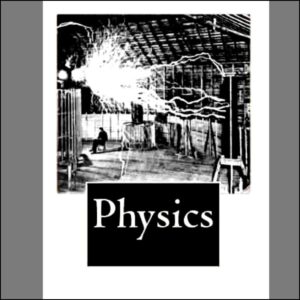 $5.00Buy Now
$5.00Buy NowThis Physics textbook was written in 1920 and will help students gain a solid understanding of the subject matter. It is 436 page .pdf and includes valuable illustrations that will aid in student understanding. There are no test or answer keys, however each chapter will ask important questions and includes a review outline. Because there are no answer keys, it is suggested that students keep a physics science notebook. Within that notebook, they are to
– write out the exercises
– write their answers
– highlight their answers/or text that helped them develop their answers within the textbook
– notate by their answers the page number(s) of highlighted sectionsPreview a small selection of this resource here.
See description below for further details
